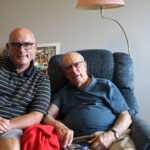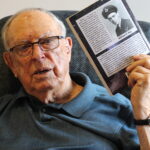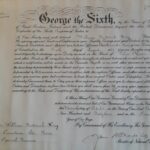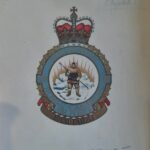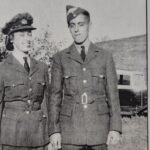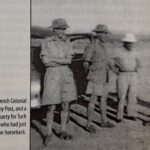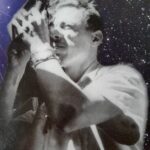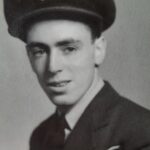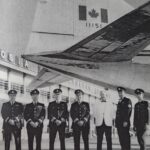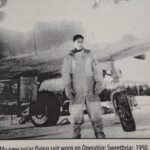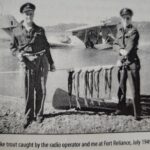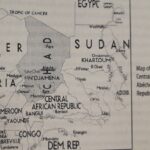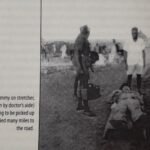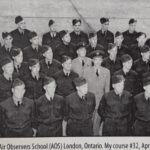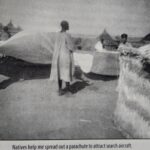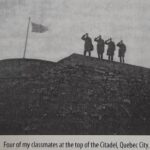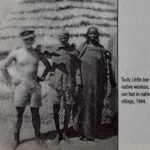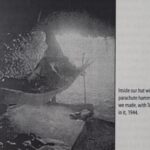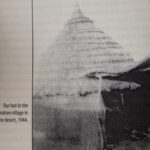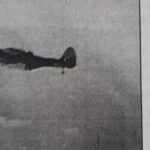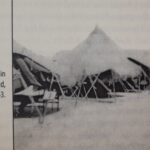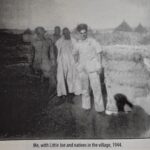William (Bill) Hoy was born in Welland, Ontario on January 30, 1924. His family had emigrated to Canada from Britain and settled in the Ottawa area, but by the time of Bill’s birth they had settled in Welland, where Bill’s father did his Great War service, guarding the Welland Canal. Bill grew up against the backdrop of the Great Depression, and he and his siblings did what they could to earn extra money, delivering newspapers and so on. Bill was a good student who skipped a few grades, and he was able to graduate high school early, just as the war was beginning. He was too young to volunteer or even to work in war industry at that time, so Bill spent the first part of the war working on farms near Welland. Once he did turn 16 Bill did work in war-related industries producing shells; when he turned 18, he and several friends went to enlist in the RCAF. Bill passed his medical, and soon he began his training in the British Commonwealth Air Training Program, attending schools in different parts of the country on his path to becoming a navigator. As he was completing that process Bill learned about Ferry Command, and as he was at the top of class and allowed to choose his path, he opted to serve in that capacity, ferrying aircraft to the battlefields in Europe. He was in Montreal and expecting to fly the northern route, but now seconded to the RAF Bill was assigned to fly the southern Atlantic route out of Nassau, Bahamas, going through the Caribbean and Brazil en route to Accra in the Gold Coast, Africa. On their third flight – in a B-26 this time – they were asked to cross the Sahara to Cairo; after experiencing engine trouble the crew was forced to bail out in the middle of the desert. Bill jumped first and the rest of the crew or the plane was nowhere to be seen, but he had noticed a settlement not too far away, and the villagers were able to help him find the plane and were able to take him to another nearby village. After several uncertain days a rescue plane spotted them, and after an adventurous journey across the desert the French Colonial Army put them on a plane bound for the Anglo-Egyptian Sudan. After that ordeal Bill was granted a survivor’s leave, and he was able to go back to Welland for a short stay. He headed back down south, but by this time it was the summer of 1944, and the southern route was being phased out, so Ferry Command transferred him to Montreal, where Bill began to fly the northern route through Greenland and Iceland. Bill did several flights in this time, mostly on Dakotas, Lancasters, and Liberators; after this he was assigned to a transport squadron in England, but a baseball injury sidelined him right at the end of the war, marking an end to his RAF flying days. While he was recuperating VE Day took place, and Bill remembers being allowed one beer in the hospital ward. He was then sent to a repatriation base hospital in Aldershot, just in time for the riots. Bill returned to Canada on a hospital ship and spent time in rehabilitation and convalescent hospitals in Toronto and Niagara Falls through 1945-46. Bill decided to make a life in the Canadian Forces, and he served all through the Cold War era, travelling around Canada and the world and adding his technical expertise to a variety of Canadian Forces projects. Along the way, he married and raised a family too, finding his place in postwar Canada. Bill Hoy was interviewed by Scott Masters at his home in Ottawa in July 2022.
Videos
Click next video below to keep watching
- 1. Prewar Memories
- 2. Canada Declares War
- 3. BCATP Training
- 4. Mishaps
- 5. The First Ferry Command Flight
- 6. The Third Trip
- 7. Searching for the Crew
- 8. Rescue, Part 1
- 9. Rescue, Part 2
- 10. From Khartoum to Welland
- 11. Back to Nassau
- 12. The Northern Route
- 13. VE Day
- 14. Return to Canada
- 15. Readjustment and Remembrance
